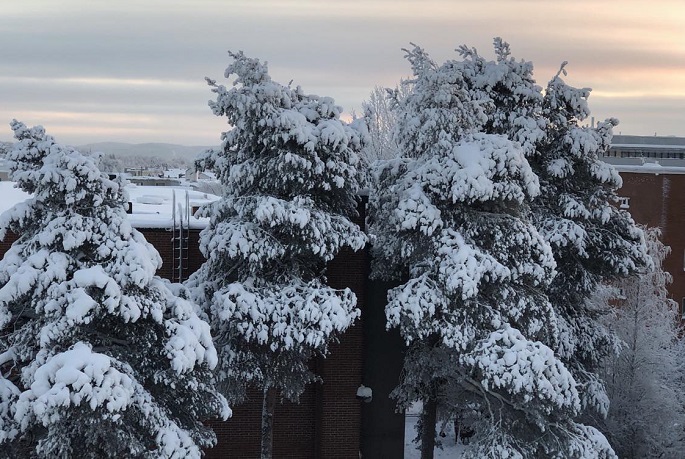Finland sees unusually cold winter
Published : 06 Mar 2024, 23:12
Updated : 06 Mar 2024, 23:20
The winter, the period from December to February, was colder than usual, according to the Finnish Meteorological Institute (FMI).
Temperatures were widely 1–3 degrees Celsius below the long-term average. The last time winter was such colder in a large part of the country in 2011, said the FMI in a press release on Wednesday.
February was fairly ordinary in temperatures, but December and January, which were clearly colder than average, caused the whole winter to be recorded as colder than usual.
The average temperature in the winter varied between about minus 1 degree Celsius in the southwest archipelago to minus 14 degrees Celsius in Eastern and Northern Lapland.
The lowest temperature for the winter, minus 44.3 degrees Celsius, was recorded at the Enontekiö Airport on January 5, which was also the lowest temperature measured in Finland in the 2000s.
The highest temperature for the winter, +6.8 degrees Celsius, was recorded at the Kökar observation station in Bogskär, on December 19.
The precipitation from December to February was close to the typical level, with the west coast and Lapland experiencing precipitation slightly below the long-term average levels.
According to preliminary data, the highest precipitation for the winter months, 207.6 mm, was recorded at the Kumpula observation station in Helsinki. The lowest precipitation, 59.9 mm, was recorded at the Nellim observation station in Inari.
According to the FMI, February's average temperature was fairly typical. The average temperature of the month varied between about minus 1 degree Celsius in the southwest archipelago to approximately minus 12 degrees in Eastern Lapland. The deviation from the long-term average was about one degree above the average in the southern part of the country and in Northern Lapland, in other parts of the country the average temperatures were close to normal.
The lowest temperature for the month, minus 39.7 degrees, was recorded at the Tulppio observation station in Savukoski, on February 9. The highest temperature for the month, +6.2 degrees, was recorded at the Santahaka observation station in Kokkola, on February 24.
With the exception of Lapland, February was more rainy than usual, in places even exceptionally rainy.
According to preliminary data, the highest amount of precipitation in February was recorded in Kangasniemi village, where the total amount of rainfall was 90 mm.
The highest amount of precipitation within a 24-hour period, 36.8 mm, was measured at the Jomalaby observation station in Jomala, on February 16. The lowest amount of precipitation was recorded at the Näkkälä observation station in Enontekiö, only 11.6 mm.
At the end of February, snow was found at all observation stations in mainland Finland. There was no snow in the Åland Islands and in parts of the southwest archipelago.
Snow cover was deepest, 111 cm, at the Puolanka Paljakka observation station in Kainuu. Especially in the central part of the country, the amount of snow was higher than usual, even exceptionally high at some places from Central Finland to Kainuu. On the southern coast and in Eastern Lapland, there were areas with less snow than average.
February saw 30‒70 hours of sunshine. Generally speaking, the number of hours of direct sunlight was slightly below usual.


